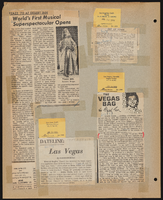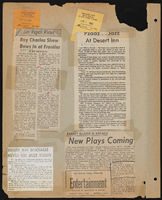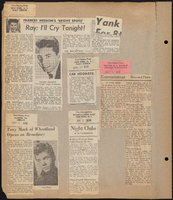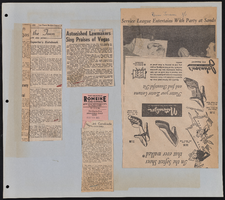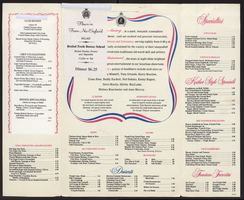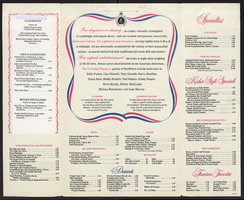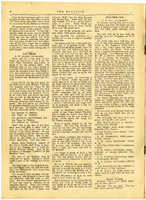Search the Special Collections and Archives Portal
Search Results

Transcript of interview with Dayvid Figler by Barbara Tabach, June 22, 2016
Date
Archival Collection
Description
Dayvid Figler (1967 - ) is the quiet boy who became an insightful and creative contributor to the local culture of Las Vegas. The oldest of Barbara and Meyer Figler?s three children, he was four years old when the family station wagon reached Las Vegas in 1971. They moved in with Uncle Izzy (aka Big Irish) Figler for a few months. Having the ?juice,? Dayvid?s father soon became a Pan dealer on the Strip. As the family grew, Barbara eventually immersed her energies in her children?s activities, Hadassah and Temple Beth Sholom. In this oral history, Dayvid also recalls his awkward, but incredibly interesting youth, his bar mitzvah at Temple Beth Sholom, and path to a successful career as a criminal defense attorney. He also talks about embracing Las Vegas as his home, owning a home in John S. Park neighborhood and mentions a number of literary depictions of Las Vegas that he admires. Dayvid describes growing up a ?casino kid? who lived in an apartment near the Riviera Hotel. This, in addition to his slight stature and academic brilliance, may have set him apart from many of his childhood peers. He graduated from Valley High School at the age of 16 and by the age of 23 he was a rising star in the legal world. He looks back with appreciation to his list of mentors who encouraged him along the way. Dayvid is also a local favorite as an essayist and poet. For a number of years he could be heard on KNPR/NPR. He has been a performer in hundreds of productions that featured his comic wit and writings, from Lollapalooza to Tom and Jerry?s on Maryland Parkway.
Text
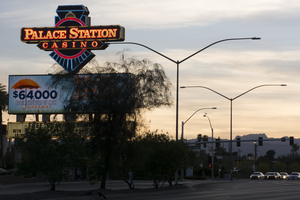
Photographs of Palace Station sign, Las Vegas (Nev.), April 5, 2017
Date
Archival Collection
Description
Site address: 2411 W Sahara Ave
Sign owner: Palace Station
Sign details: Founded by Frank Fertitta III, was originally Bingo Palace in 1976 but was changed to Palace Station
Sign condition: 4 - some broken lights on the sign but for the most part seems in great condition. Owners unsure if keeping the sign or replacing it with a new one during 2017 remodel of property
Sign form: back to back pylon
Sign-specific description: Double sided pylon road side sign, word "PALACE STATION HOTEL CASINO" In red encasement stuck to the front of a minimalistic image of a train, the word "BINGO" underneath the train front. Skeleton Neon is used to accentuate the features of the train and the lettering on the sign.
Sign - type of display: Neon and incandescent
Sign - media: Steel, Plastic
Sign animation: Chasers around "PALACE STATION HOTEL CASINO" and "BINGO" boxes and the neon in the boxes turn off then fill in from both sides until full again
Sign environment: Property is near the I-15, by local businesses and some residential
Sign - date of installation: c. 1983
Sign - thematic influences: Seeking to avoid the western theme popular among casinos at the time, Fertitta chose trains. Worried that the name Bingo Palace didn't highlight the full-range of gaming and amenities on offer at the expanded casino, Fertitta held an open contest to rename the casino later that year. More than 26,000 entries were received over three weeks. Las Vegas resident Claire Jarvis won as Palace Station touched on the new train theme while keeping part of the original name. - Las Vegas Review Journal
Sign - artistic significance: Owner Frank Ferttitta Jr held a contest for the casinos new theme and the "train station" theme was the favorite out of the entries.
Survey - research locations: UNLV Special Collections, Las Vegas Sun, YESCO, Review Journal
Surveyor: Danny Jacobs
Survey - date completed: 2017-09-10
Sign keywords: Pylon; Neon; Incandescent; Steel; Chasing; Back to back; Roadside; Video screen; Reader board
Mixed Content


